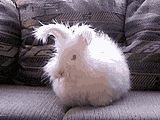WHO
WE ARE
About
Us
How I
Started Handspinning
DROP SPINDLES
*Types
of Drop Spindles
How To
Make A Drop Spindle
Making
Yarn With A Drop Spindle 
SPINNING WHEELS
Styles
of Spinning Wheels
Parts Of
The Spinning Wheel
*How
The Spinning Wheel Works
* Adjusting
The Wheel's Tension
*Drive
Ratios & Twist
HANDSPINNING TECHNIQUES
Preparing
To Spin 
Basic
Handspinning Techniques 
Adding
On More Fiber 
Spinning
Woollen and Worsted Yarn
*Making
A Skein With A Niddy Noddy
* "Setting
In The Twist" Of Handspun Yarn
*Navajo
Plying 
FIBER INFORMATION
Alpaca 
Angora 
Llama 
Mohair 
Silk
Wool 
WOOL PREPARATION
How to Wash
Your Fleece
How to
Use Hand Carders 
How to Use
a Drum Carder
How to Use
Dutch Combs
How to Use
Mini-Combs
Using a
Diz
DYEING INFORMATION
Natural
Dyes
Natural
Plant Dyeing
Mordants
Natural
Dyeing: Helpful Tips
Dyeing with
Gaywool Dyes
BUY EQUIPMENT & SUPPLIES
ONLINE
PRODUCT CATALOG
Return
Policy
Payment
Options
Mail-in
Order Form
*THE
BOOK STORE
SERVICES
Custom
Yarn Spinning
WOOLY WABBIT(TM) FARM
Meet
the "Wooly Wabbits" 
Angora
Rabbit Breeds
How
to Care For Your Angora Rabbit
FEEDBACK
REQUEST
INFORMATION
RELATED LINKS
* WORLDWIDE
LIST OF
SPINNING GUILDS
|
Fiber Types Angora
Angora Rabbits - Videos

English Angora Rabbit
Characteristics:
- Natural, Animal Fiber (rabbits) Clean, directly from the rabbit Does not require washing, picking, combing, or carding Seven times warmer than sheep's wool Luxurious Very durable Hand-washable Not irritating to the skin like sheep's wool Easy to dye
- Blends extremely well with other fibers
End Uses:
Angora is ideal for making baby garments, winter underwear, sweaters, hats, scarves, and mittens
Breeds of Angora Rabbits
|

